|
||||||||||||||||||||||||||||||||
|
||||||||||||||||||||||||||||||||
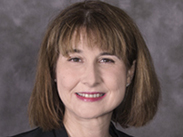 Computational methods make a difference when the challenge is to develop a new material for a given technology or to adjust material properties to fit a specific application.
Computational methods make a difference when the challenge is to develop a new material for a given technology or to adjust material properties to fit a specific application.
In the end of September, the computational materials scientist Susan Sinnott will talk about this topic of her expertise in a plenary lecture at the XV Brazil-MRS Meeting. Sinnott is Professor and Department Head of Materials Science and Engineering at Pennsylvania State University (USA). She is also the editor-in-chief of “Computational Materials Science” (Elsevier).
Susan Sinnott received her B.S. degree in Chemistry (with honors) from the University of Texas in 1987 and her doctoral degree in Physical Chemistry from Iowa State University in 1993. Then she worked as a postdoctoral associate at the U.S. Naval Research Laboratory until 1995. After that, she became a faculty member of the University of Kentucky. In 2000, she began her tenure at the University of Florida (UF). In 2012, she was named the Alumni Professor of Materials Science and director of the Cyberinfrastructure for Atomistic Materials Science at UF. In 2013, she was president of the American Vacuum Society (AVS). In 2015, she joined the Pennsylvania State University (Penn State).
Susan Sinnott is the author of more than 210 refereed journal papers and 8 book chapters. She has over 10,000 citations and an h-index of 46, according to Google Scholar.
She is a Fellow of the Materials Research Society, American Physical Society, American Ceramic Society, American Vacuum Society, and American Association for the Advancement of Science.
In the XV Brazil-MRS Meeting, Susan Sinnott will not only deliver the plenary lecture “Role of Atomic-Scale Modeling in Materials Design and Discovery”, but also take part in the roundtable “Meet the editors” to discuss scientific publication issues. Besides her position as editor-in-chief of “Computational Materials Science”, this scientist serves as associate editor, principle editor and divisional associated editor for other journals.
Here follows a short interview with the scientist.
SBPMat newsletter: – In your opinion, what are your most significant contributions to the field of materials modeling? Explain them very briefly and, if possible, share references of resulting publications or patents, products etc.
Susan Sinnott: – My research program uses computational atomistic methods to design and investigate materials. This area has seen tremendous growth in the last two decades because of a combination of factors, including the increasing availability and low cost of fast computers, the refinement of atomistic methods, the shrinking of device dimensions, and the improved ability of experimentalists to study materials at the nanometer scale. It approaches well-established continuum level modeling (such as finite element analysis) and fluid dynamics at high length scales (100s-1000s nanometers), and overlaps with traditional physics and chemistry at small length scales (1-10 nanometers).
A major contribution from my research group is the development of inventive methods to enable the modeling of new material systems at the atomic level. In particular, my collaborators and I developed a new empirical, reactive potential for molecular dynamics simulations that allows for the modeling of heterogeneous material systems at the atomic scale, something that has traditionally only been possible with computationally intensive first principles methods such as density functional theory. This method has allowed us to investigate such otherwise intractable problems as Cu thin film growth on ZnO surfaces, and model the catalytic activity of metal clusters on oxide surfaces. These potentials have been incorporated into an open-source massively parallel molecular dynamics software developed at Sandia National Laboratory to make them available to the modeling community.
Some relevant publications are:
SBPMat newsletter: – In the abstract of your plenary lecture, you mention the concept of “materials by design”. Could you explain this idea in a few words? Today, is “materials by design” a fact or a promise?
Susan Sinnott: – The ability to design a material with desired properties a priori using computational methods has been a promise of the field of computational materials science for many years. This promise relies on designing materials that do not currently exist or with properties that are desired from compositions that are largely unknown. The day that we can input the properties desired for a given part or device into a computer and have it predict the composition and microstructure or morphology needed to produce those properties has not yet arrived but remains the ultimate goal of “materials by design” initiatives. Currently, the integration of computational and experimental approaches is more complete than ever before. This enables computational materials science methods to make predictions that can be subsequently validated, and for experimental observations to be explained. Advances depend on continued improvements in the accuracy and predictability of computational methods along with continuing improvements in the linkages of the computational results to data from experimental characterization and production methods. An integral component to the new paradigm for materials design and discovery is the production and integration of datasets from calculations, simulations, experiments, or a combination of all of these. Therefore the seamless integration of database mining and materials informatics methods with conventional experimental and computational materials science methods is required. Lastly, the materials community must reach a critical comfort level and associated understanding of the strengths and limitations of coupling these methods so that such comparisons can be made on a routine basis.
A relevant paper that discusses these ideas in more detail is:
“Material design and discovery with computational materials science”, S.B. Sinnott, Journal of Vacuum Science and Technology A 31, 050812 (2013)
SBPMat newsletter: – If you desire, leave an invitation for our readers to go to your plenary lecture at the XV Brazil-MRS Meeting.
Susan Sinnott: – I invite you to find out more at my plenary lecture at the XV Brazil-MRS Meeting.
Link to the abstract of Susan Sinnott´s plenary lecture at the XV Brazil-MRS Meeting: http://sbpmat.org.br/15encontro/speakers/abstracts/10.pdf
[Paper: Topologically Protected Metallic States Induced by a One-Dimensional Extended Defect in the Bulk of a 2D Topological Insulator. Erika N. Lima, Tome M. Schmidt, and Ricardo W. Nunes. Nano Lett., 2016, 16 (7), pp 4025–4031. DOI: 10.1021/acs.nanolett.6b00521]
Isolating nanoribbons with conducting regions
A research carried out in Brazil made an important contribution to the study of topological insulators, a class of materials that was theoretically predicted in 2005 and experimentally confirmed in 2007. The study was reported in an article recently published in Nano Letters (impact factor: 13.779).
A unique property of Topological insulators is that they behave as insulators on the inside and as conductors on its surface or edge. According to Ricardo Wagner Nunes, professor at the Federal University of Minas Gerais (UFMG) and corresponding author of the article, “non-topological insulators may also have conductive surfaces, but in the case of topological insulators, conduction of charge and spin on the surface is robust, as it is “protected” by time reversal symmetry”.
In the article in Nano Letters, Professor Nunes and colleagues, Erika Lima, of the Federal University of Mato Grosso (UFMT) – Rondonópolis campus, and Tome Schmidt, of the Federal University of Uberlândia (UFU), reported their work on a two-dimensional topological insulator, a bismuth nanoribbon of only two layers of bismuth atoms (one-atom thick), superimposed and bonded. Using computational methods, the scientists showed that the interior of the bismuth nanoribbon, instead of being fully insulating, may have conductive states (also called metallic states) generated from a particular type of irregularity in the atomic structure of the material, known as 558 extended defect.
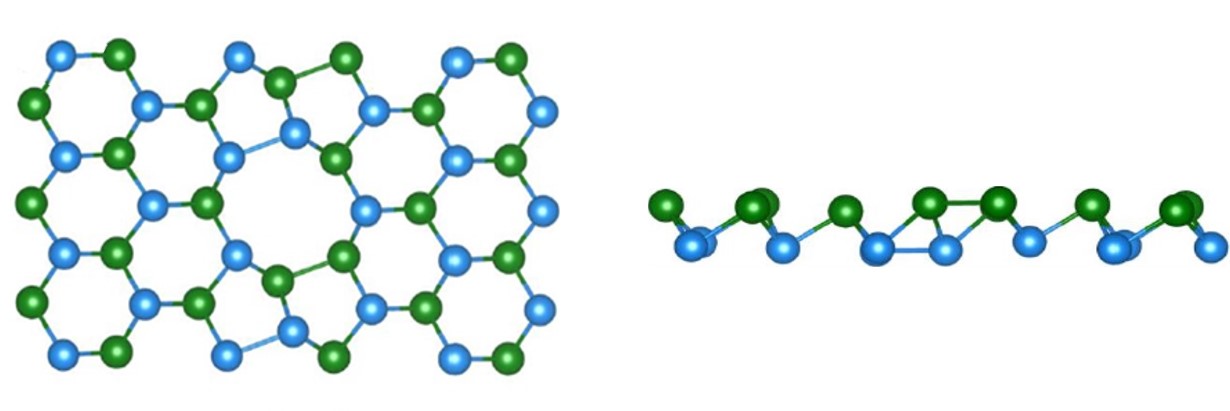
“In our work, we show that a linear defect within a two-dimensional topological insulator can generate one-dimensional electronic quantum states that conduct spin and charge within the material”, say the authors.
This conclusion was supported through calculations performed on supercomputers, simulating what would happen to the electrons in quantum states, in the material, in the presence of defects. “We used first-principles Density Functional Theory calculations”, specify the authors, who relate that the computer simulation of defects in bismuth nanostructures required approximately 400 hours of computer simulations on supercomputers in the Department of Physics – UFMG and at the National Center for High Performance Computing in São Paulo (Cenapad) – UNICAMP.
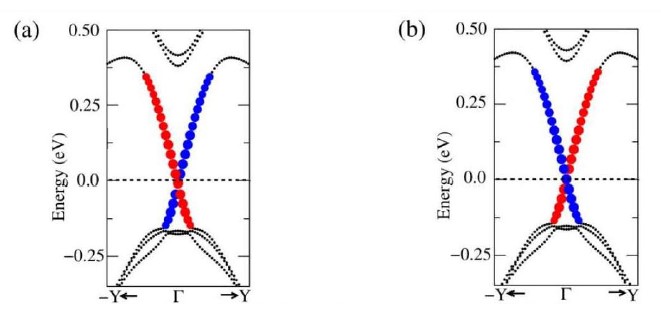
In the article, the authors also propose the existence of pentaoctite, a new two-dimensional topological insulator. This material, which has not been synthesized yet, is a bismuth bilayer with a crystal lattice formed by atoms arranged in pentagons and octagons. As stated by the authors, “In our calculations we show that this new “phase” of the two-dimensional bismuth has low formation energy, which opens the possibility to be synthesized in the laboratory”.
According to the authors, the work reported in Nano Letters raises several issues in the scope of fundamental research, such as the influence of magnetic and non-magnetic impurities on the spin and charge transport in the proposed topological states, and the connection between the network symmetries and nature of the topological edge states on pentaoctite. “From the point of view of applications, it would be interesting if our work could motivate experimental studies of two-dimensional topological insulators based on bismuth and other materials, enabling theoretical and experimental collaboration on this issue”, comment the authors, leaving an open invitation to experimental research groups.
The origin of this research work
“The work originated by combining my interest in extended topological defects in two-dimensional and three-dimensional materials, with the experience of Professor Tome Mauro Schmidt (UFU) and Erika Lima, his doctoral student in the subject of topological insulators”, states Nunes.
In 2012, Nunes and collaborators published an article in Nano Letters on magnetic states (non topological) generated by linear extended defects in a monolayer of graphene. Later, in a conversation with Schmidt, a collaboration was decided in order to investigate if an extended defect with the same morphology would lead to the formation of topological states in a bidimensional topological insulator made of bismuth.
In her post-doctorate in the group of Professor Nunes, in 2015, Erika Lima performed all computer calculations. The three researchers, who are the authors of the article, interpreted the results and wrote the paper.
The research that led to the article received funding from Brazilian agencies CAPES, CNPq, FAPEMIG and from the National Institute of Science and Technology on Carbon Nanomaterials.

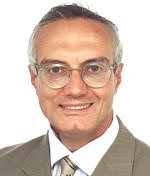
Professor Victor Carlos Pandolfelli, of the Department of Materials Engineering, Federal University of São Carlos (DEMa-UFSCar) was chosen to serve as one of the editors-in-chief of the journal Ceramics International. The international journal with 41 years of history is published by Elsevier. It currently has an acceptance rate of 25% of the articles submitted.
Pandolfelli completed his doctorate in Leeds (UK) in 1989 and in 1996 and 1997 he completed his postdoctoral studies at the École Polytechnique in Montreal (Canada). He is full professor at DEMa-UFSCar, member of the Brazilian Academy of Sciences, full member of the World Academy of Ceramics, a fellow of the American Ceramic Society, full member of the Brazilian National Academy of Engineering and guest professor at Wuhan University of Science and Technology (China). He is a member of the board of the World Academy of Ceramics (2014-2018), member of the International Technical Board of Morgan International (England) and Latin American coordinator of the FIRE (Federation for International Refractories Research and Education), which involves 10 universities in different countries and 17 leading companies in the refractory area. He is the author of 480 articles published in scientific journals and two books. He has received 12 international awards.
The Brazilian Materials Research Society (SBPMat) is pleased to announce that the XVI Brazil-MRS Meeting will be held in the city of Gramado (State of Rio Grande do Sul, Brazil) from 24 to 28 10 to 14 of September, 2017.
Save the date!
|
||||||||||||||||||||||||
Cannot see this message? Click here.
[Paper: Hybrid tantalum oxide nanoparticles from the hydrolysis of imidazolium tantalate ionic liquids: efficient catalysts for hydrogen generation from ethanol/water solutions. Virgínia S. Souza, Jackson D. Scholten, Daniel E. Weibel, Dario Eberhardt, Daniel L. Baptista, Sérgio R. Teixeira and Jairton Dupont. J. Mater. Chem. A, 2016, 4, 7469-7475. DOI: 10.1039/C6TA02114J.]
Super efficient nanoparticles to catalyze production of hydrogen, an alternative fuel.
While some automobiles which use hydrogen fuel are entering the market, scientists from around the world are still trying to find cleaner, more sustainable, safer and cost-effective ways to generate and store hydrogen. In fact, even though it is the most abundant element in the universe and found in the water and in numerous other compounds, hydrogen cannot actually be found in its pure form on our planet. It must therefore be obtained from other chemical compounds.
One of the best methods to produce hydrogen, from ecological and economical points of view, is water splitting. This technique consists of separating water molecules into its two primary elements, generating hydrogen (H2) and oxygen (O2) gases. This separation can be achieved through the use of the abundant solar energy, at room temperature. However, in practice, for sunlight to split one water molecule, it requires nanoparticles made of semiconducting materials to act as catalysts, or more specifically, as photocatalysts.
In a study fully carried out in Brazil, a team of scientists developed a new simple and efficient method to produce tantalum oxide nanoparticles (Ta2O5) with outstanding performance catalysts for hydrogen generation. The research was reported in a paper recently published in the Journal of Materials Chemistry A (impact factor: 8.262).
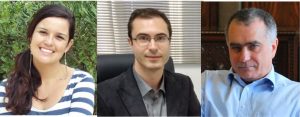
This study was funded by the Brazilian research agencies CAPES and CNPq, as the doctoral research of Virgínia Serra Souza at the Chemistry Institute of the Federal University of Rio Grande do Sul (IQ-UFRGS), under the guidance of Professor Jairton Dupont.
“The idea for this research came when we were looking for an alternative and efficient route for the synthesis of Ta2O5 nanoparticles, and after some experiments we decided to test the possibility of using ionic liquids as stabilizing sources and agents of the nanomaterials”, says Professor Jackson Damiani Scholten, who is one of the corresponding authors of the paper and member of the research group of IQ-UFRGS. This group has extensive experience in the study and development of ionic liquids (salts which are in liquid state at room temperature). Due to their physicochemical properties, ionic liquids can be used in the preparation of nanoparticles as stabilizers to keep the particles in the nanometric range.
Souza, Scholten and Dupont prepared two types of ionic liquids containing tantalum and create the conditions for the hydrolysis reaction (breaking the chemical bonds of a compound by the addition of water). The elements resulting from the hydrolysis, from the water and the ionic liquid, recombine to form tantalum oxide nanoparticles.
The team realized it had produced tantalum oxide nanoparticles ranging between 1.5 and 22 nm, the smaller ones had been generated from one of the ionic liquids and the larger ones from the other. With the assistance of Professor Daniel E. Weibel, also from IQ-UFRGS, they studied the surface composition of the nanoparticles. These scientists proposed that the nanoparticles obtained were hybrid: remains of ionic liquid were observed around the tantalum oxide.
To see how the nanoparticles behaved as catalysts in the separation of water molecules to generate hydrogen, the team conducted photocatalytic tests at the facilities of the Institute of Physics – UFRGS, provided by Professor Sérgio R. Teixeira. The tests were carried out in a solution that besides water contained ethanol – a compound that helps to increase the hydrogen production rate.
“We were delighted that the Ta2O5 nanoparticles showed one of the best results ever published for the production of H2 from a water/ethanol solution”, recalls Professor Scholten. In the article, this exceptional result was attributed to the presence of ionic liquid in the nanoparticles. “We believe that the residual ionic liquid enhances the formation of a hydrophilic regions on the surface of Ta2O5, favoring the approximation of polar molecules (water and ethanol)”, explains Scholten. To be certain about this, the scientists removed the ionic liquid from the nanoparticles by heat treatment and confirmed their very low photocatalytic activity.
In another stage of the research, Dario Eberhardt, then professor at the University of Caxias do Sul (UCS), collaborated with the team in the deposition of roughly 1 nm platinum nanoparticles on the surface of the hybrid tantalum oxide nanoparticles by the sputtering technique, carried out at IF-UFRGS. Professor Daniel L. Baptista, of IF-UFRGS, helped to characterize the material. In the tests, the performance of the tantalum oxide nanoparticles with photocatalytic ionic liquid was even better with the addition of platinum.
This work, carried out in southern Brazil, presented a new method to produce super-efficient catalysts for hydrogen production, a promising alternative fuel from water and ethanol, two renewable and abundant resources.
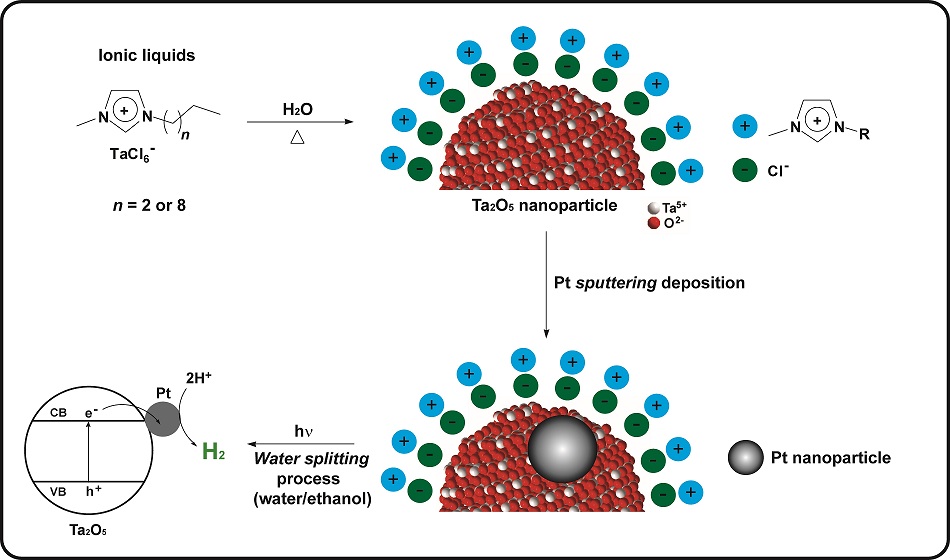
 The “Research in Germany” campaign invites all XV Brazil-MRS Meeting attendees to the “Science Lunch” that will take place on September 26 (Monday) from 12:00 to 14:00 hs in Araucária room at the convention center Expo D. Pedro.
The “Research in Germany” campaign invites all XV Brazil-MRS Meeting attendees to the “Science Lunch” that will take place on September 26 (Monday) from 12:00 to 14:00 hs in Araucária room at the convention center Expo D. Pedro.
According to the organizers of this activity, an informal lunch will be offered, in which Germany will be presented as a research location and scientific networking will be promoted. Participants will be able to speak directly to invited scientists who will talk about their research, as well as to representatives of German funding agencies providing individual consultation on exchange programmes and research stays in Germany. This event is also an opportunity for those who are looking for information regarding scientific collaboration with colleagues in Germany and research funding.
The activity is free of charge for the XV Brazil-MRS Meeting attendees and requires registration, available here: https://ssl.daad.de/limesurvey/538867/lang-en. Limited spaces available.
 Organic semiconductors are materials that combine useful properties of plastics (easy shaping, flexibility, low weight, low-cost processing) with the possibility of conducting electricity and emitting light. At the University of St Andrews, which lies since 1413 in a beautiful seaside location in Scotland (UK), Prof. Ifor Samuel converts his fascination for organic semiconductors into new materials, devices and applications.
Organic semiconductors are materials that combine useful properties of plastics (easy shaping, flexibility, low weight, low-cost processing) with the possibility of conducting electricity and emitting light. At the University of St Andrews, which lies since 1413 in a beautiful seaside location in Scotland (UK), Prof. Ifor Samuel converts his fascination for organic semiconductors into new materials, devices and applications.
Ifor Samuel received his MA and PhD diplomas from the University of Cambridge (England, UK), after working on optical spectroscopy of organic semiconductors. After his PhD, Samuel moved to Paris for two years to perform postdoctoral work at CNET-France Telecom, investigating the non-linear optical properties of organic materials. Back to England, he carried out research at Cambridge for a year, as research fellow at Christ’s College. After that, he set his own research group on light-emitting polymers at the University of Durham where he also held a Royal Society University Research Fellowship. In 2000 he joined the University of St Andrews, where he founded, in 2001, the Organic Semiconductor Centre, dedicated to interdisciplinary research on understanding and improving organic semiconductors and exploring their applications in the semiconductor, electronics and optoelectronics industries. In 2004 he founded the company Ambicare Health Ltd that produces wearable light sources for healthcare applications.
Ifor Samuel holds an H-index of 58. He has published more than 400 journal papers. His publications have more than 12,000 citations. He is a Fellow of the Royal Society of Edinburgh, the Institute of Physics, the International Society for Optics and Photonics (SPIE) and the Royal Society of Chemistry. Among other prizes, he won the Chemical Dynamics Award for 2016 of the Royal Society of Chemistry for his contributions to understanding light emission and fundamental photophysical processes in organic semiconductors.
At the University of St Andrews, Ifor Samuel is Professor of Physics, Director of the Organic Semiconductor Centre and head of the Organic Semiconductor Optoelectronics group. He is a member of the editorial board of the Journal of Photonics for Energy, and Editor-in-Chief of Synthetic Metals, a journal of electronic polymers and electronic molecular metals.
Here follows a short interview with Professor Ifor Samuel, who will be in Campinas (Brazil) at the end of September to talk about Organic Semiconductor Optoelectronics in a plenary lecture of the XV Brazil-MRS Meeting.
SBPMat newsletter: – In your opinion, what are your most significant scientific contributions to the organic semiconductors field? Explain them very briefly and, if possible, share references of resulting publications.
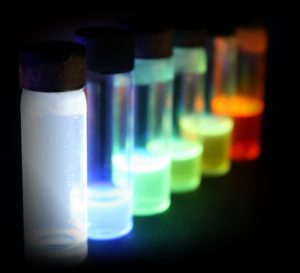
Ifor Samuel: – There have been two main themes to my research. One is understanding organic semiconductors with the aim of using that understanding to improve them. In this direction, I have studied the light emission process in conjugated polymers which is very important for organic light-emitting diodes (OLEDs) [1,2], developed as a new class of OLED material (with P.L. Burn) [3], and measured exciton diffusion which is very important in polymer solar cells [4].
The other major theme has been pushing the boundaries of devices and applications. Here, instead of developing new materials, I have been exploring what new things can be done with existing materials. For example, whilst nearly everybody was working on OLEDs for displays, I had a very interesting discussion with James Ferguson, head of dermatology at Ninewells Hospital in Dundee, leading to the development of wearable light sources for treatment of non-melanoma skin cancer [5]. More recently my team developed a wearable organic optoelectronic sensor for muscle contraction [6]. We have also been working with the Belgian Royal Military Academy on using conjugated polymer fluorescence and lasing for explosive detection for humanitarian demining. Recently we demonstrated (as part of a large project with collaborators in Edinburgh, Strathclyde and Oxford) the use of organic semiconductors for visible light communication, achieving record data rates for white visible light communication [7].
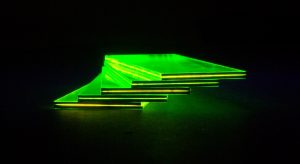
Efficient interchain photoluminescence in a high-electron-affinity conjugated polymer. I.D.W. Samuel, G. Rumbles and C.J. Collison. Physical Review B. 52, 11573 (1995).

Wearable organic optoelectronic sensors for medicine. A.K. Bansal, S.B. Hou, O. Kulyk, E.M. Bowman and I.D.W. Samuel. Adv. Mater. 27, 7638 (2015).
SBPMat newsletter: – You have authored many patents. Are there products in the market based on our inventions?
Ifor Samuel: – The majority of my patents are licensed to companies that are developing them. There are several patents relating to light-emitting dendrimers as highly efficient solution-processed OLED materials. These were initially licensed to Opsys Ltd in Oxford, who were later acquired by Cambridge Display Technology, who in turn are now wholly owned by Sumitomo Chemical and incorporate aspects of the technology in their products. For the skin cancer treatment, the patents were licensed to the spin-out company Ambicare Health Ltd. Ambicare have brought two related products to market – one is a wearable red light source for skin cancer treatment, and the other is a wearable blue light source for acne treatment.
SBPMat newsletter: – The properties of organic semiconductors are different from those of inorganic semiconductors, leading to creation of novel devices. Could you give some examples of existing and not-yet invented devices based on organic semiconductors?
Ifor Samuel: – The advantages of organic semiconductors come from how they combine novel semiconducting optoelectronic properties with simple fabrication and the scope to tune properties by changing their structure. An existing organic semiconductor device is an OLED mobile phone display or television. They give very vivid images, together with outstanding contrast and viewing angle. However, in contrast to inorganic semiconductors which are rigid and brittle, organic semiconductors can be used to make flexible devices – such as light-emitting bandages for medicine. The flexibility has not yet been fully exploited, but also simplifies manufacture which could be by simple roll to roll processes. This would be an excellent way to make solar cells in Brazil. The laser explosive sensors are completely different from inorganic lasers because the explosive vapour binds to the gain medium and modifies its light emission.
SBPMat newsletter: – If you desire, leave an invitation for our readers to go to your plenary lecture at the XV Brazil-MRS Meeting.
Ifor Samuel: – I have really enjoyed my previous visits to the Brazil MRS meeting and look forward to visiting Campinas. Do come to my lecture to hear about the remarkable world of organic semiconductors and their applications.
Link to the abstract of Ifor Samuel´s plenary lecture at the XV Brazil-MRS Meeting: http://sbpmat.org.br/15encontro/speakers/abstracts/6.pdf
Aiming to create a top-tier interdisciplinary platform for scientists to share and promote 2D materials research and applications, npj 2D Materials and Applications is a new online-only, open access journal.
2D Materials and Applications is part of the Nature Partner Journals (npj) series, launched by Springer Nature as part of the Nature Research portfolio of journals, and published in partnership with the Faculdade de Ciências e Tecnologia da Universidade Nova de Lisboa (FCT Nova) with the support of the European Materials Research Society (E-MRS).
npj 2D Materials and Applications will publish original papers, review articles and short communications to reflect the latest breakthrough and developments taking place in all aspects of 2D materials, including allotropes (different structures of the same element) and compounds, ultralight composite materials, their properties (including mechanical properties), and their isolation, synthesis and manufacturing.
The journal will also publish research relating to the use of 2D materials in applications such as photovoltaics, optoelectronics and photonics, semiconductors, sensors, electrodes, water purification/filtration/distillation, and energy storage.
Led by Editor-in-Chief Professor Andras Kis, the journal is now open for submissions.
Visit the journal website to find out more: http://www.nature.com/npj2dmaterials/